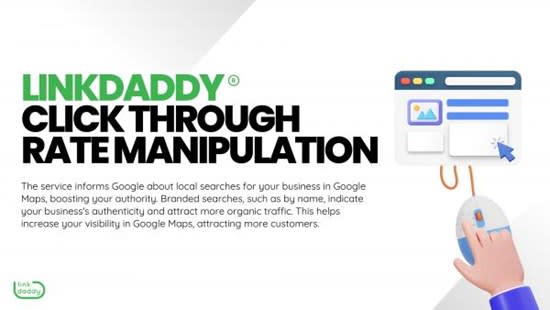CTR Manipulation-- Effective Techniques for Increasing Click-Through Rates
CTR Manipulation-- Effective Techniques for Increasing Click-Through Rates
Blog Article
CTR Control: A Video Game Changer for Digital Campaigns
The surge of CTR manipulation has actually undeniably transformed electronic advertising and marketing methods, supplying marketers with devices to boost engagement and drive web traffic efficiently. What effects might this balancing act hold for the future of electronic campaigns?
Understanding CTR Adjustment
Although click-through price (CTR) control may look like a simple tactic in electronic marketing, it incorporates a variety of approaches targeted at artificially pumping up engagement metrics. This manipulation can take numerous types, consisting of the use of click ranches, bots, or deceitful ad positionings that mislead consumers into clicking. These approaches can jeopardize the honesty of efficiency information, making it testing for marketing experts to assess the authentic effectiveness of their campaigns.
Furthermore, CTR control raises moral concerns, as it threatens the transparency of electronic advertising and marketing. The reliance on inflated metrics can lead to misdirected advertising and marketing choices, skewing resource allowance and campaign methods. Services may invest heavily in networks and techniques that appear successful however do not produce actual interaction or conversions.

Advantages of Click-Through Rate Optimization
Optimizing click-through price (CTR) is crucial for improving the performance of electronic advertising and marketing projects. A higher CTR shows that a larger percentage of customers are involving with the web content, which can cause raised web site traffic and better conversion rates. By boosting CTR, brands can properly designate their marketing sources to campaigns that yield the highest returns.
One of the primary advantages of CTR optimization is the capacity for boosted ad placement and reduced expenses - CTR Manipulation. Systems like Google Ads reward greater CTRs with far better advertisement positioning and reduced cost-per-click (CPC), enabling online marketers to stretch their spending plans further. Furthermore, a well-optimized CTR can improve brand exposure, as higher involvement rates typically correlate with boosted organic reach

Strategies for Efficient CTR Control
To properly adjust click-through prices (CTR), GMB CTR Manipulation marketers can utilize a selection of calculated strategies that improve user engagement and drive traffic. One essential method is enhancing advertisement duplicate to develop engaging and action-oriented language. CTR Manipulation. Using strong call-to-action (CTA) phrases encourages individuals to take immediate action, raising the possibility of clicks
An additional reliable technique is A/B testing, which enables marketing professionals to compare various advertisement variations. By methodically examining performance metrics, they can determine which aspects resonate finest with the target market, consequently improving their techniques for optimal impact. In addition, leveraging visually appealing graphics and succinct messaging can record attention promptly, making it more likely that customers will involve.

Finally, maximizing landing web pages to make sure a smooth individual experience can reduce bounce prices and encourage further interaction, ultimately cultivating greater CTR. By incorporating these methods, marketers can properly adjust CTR to achieve their project objectives.
Measuring Success in Digital Campaigns
Measuring success in digital campaigns calls for a clear understanding of crucial performance indicators (KPIs) that line up with campaign goals. KPIs serve as measurable metrics that help examine the performance of various methods used throughout the campaign. Usual KPIs consist of click-through prices (CTR), conversion rates, cost per procurement (CPA), and roi (ROI)
To properly determine success, it is important to establish details, measurable goals at the start of the campaign. For circumstances, if the main goal is to raise brand recognition, metrics such as impressions and interaction prices may be focused on. In comparison, campaigns concentrated on straight sales would certainly gain from a more in-depth evaluation of conversion prices and profits created.
Routine evaluation of these KPIs enables marketing professionals to make data-driven decisions, enhancing their strategies in real-time. Utilizing analytical tools can help in monitoring efficiency and identifying trends, permitting for quick modifications to boost campaign outcomes. Ultimately, a detailed method to gauging success not just highlights areas for renovation yet also strengthens the general effectiveness of electronic advertising and marketing efforts, driving continual development and involvement in the long-term.
Future Trends in Digital Marketing
Anticipating the future of electronic Continued advertising exposes a landscape formed by fast technological improvements and changing customer actions. As synthetic knowledge and equipment knowing proceed to develop, marketing experts will progressively take advantage of these modern technologies to customize projects at an extraordinary range. Predictive analytics will enable great site brands to anticipate customer needs, optimizing advertisement placements and material distribution in real time.
Additionally, the rise of voice search and wise devices is transforming how consumers engage with digital material. Marketers will certainly require to adapt their techniques to ensure visibility across multiple systems, consisting of voice-activated aides. This change demands an emphasis on conversational advertising and marketing, stressing involvement with discussion instead of standard advertising techniques.
Additionally, personal privacy concerns are triggering changes in information collection practices. Transparency and ethical data use will certainly come to be paramount, driving brands to promote count on and loyalty amongst consumers. The ongoing evolution of social media systems will certainly also influence marketing approaches, with an enhanced focus on authenticity and user-generated material.
Final Thought
In summary, CTR control stands for a significant advancement in digital advertising approaches, using immediate advantages through enhanced engagement metrics. The recurring advancement of digital advertising will depend on this fragile interplay, shaping the future landscape of brand-consumer interactions.
Report this page